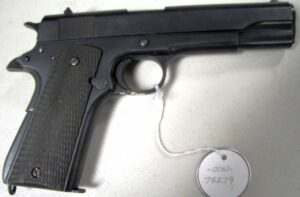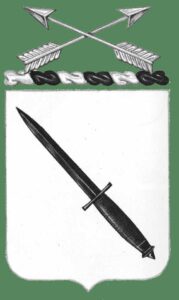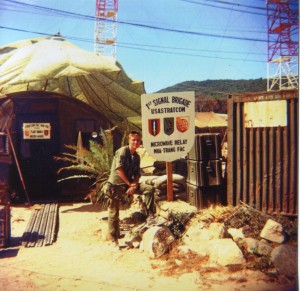While the origins of U.S. Army Special Forces date back to the French and Indian War and the formation of Rogers’ Rangers, the modern concepts of unconventional warfare were largely developed in World War II with the formation of several specially trained units. One of the these early Special Forces units was the First Special Service Force, also known as the “Devil’s Brigade.”
The origins of the First Special Service Force (or the Force, as its members referred to it) began at the highest levels of the Allied Command in World War II. The basic concept, which came from the staff of Lord Louis Mountbatten’s Combined Operations Command, called for a force able to fight on land, on the sea, in the air, and in winter conditions. Planners intended to use the force to attack hydroelectric plants in occupied Norway, oil fields in Romania, and even targets in Russia. Because neither Britain nor Norway could supply the troops, this new unit would be comprised of American and Canadian soldiers. MG Dwight D. Eisenhower, head of the War Plans Division, gave one of his staff officers, LTC Robert T. Frederick, the assignment of studying the idea, codenamed Project Plough. On 16 June 1942 Eisenhower gave Frederick the task of organizing and commanding the unit that would become known as the First Special Service Force.
After receiving his orders, Frederick began to organize a staff, obtain American and Canadian volunteers, and locate a place to train the new unit. To fill the Force’s ranks, Frederick and his staff recruited men with experience in working outdoors–lumberjacks, forest rangers, hunters, game wardens, prospectors, and others suitable for the Force’s mission. The Force was organized into three regiments, each made up of two battalions. It also had a small Air Force Detachment and a Service Battalion. In all, the Force would have approximately 2,300 officers and men.
The First Special Service Force was activated on 9 July 1942 at Fort William Henry Harrison near Helena, Montana. The rugged, mountainous terrain and extreme winter conditions made Montana the ideal place for training. The Forcemen underwent rigorous training in a variety of weapons, hand-to-hand combat, demolition techniques, airborne assault, and attack maneuvers. In the fall, a group of Norwegian Army ski troops arrived to teach the Forcemen cross country skiing.
In the fall of 1942, however, the Allies cancelled Project Plough. Although seemingly without a mission with the termination of Plough, Allied leaders decided to keep the well trained Force. In spring 1943, the Force underwent amphibious training at Norfolk, Virginia, for possible future amphibious operations.
On 15 August 1943, the First Special Service Force participated in its first operation. The Forcemen landed on the rocky shores of Kiska in the Aleutian Islands, only to discover the Japanese had secretly abandoned the island.
After returning to the U.S., the First Special Service Force was reassigned to the Mediterranean Theater and the fighting on the Italian peninsula. The Force arrived in Naples on 19 November 1943 and went into the line at Santa Maria with the 36th Infantry Division. In early December, the Force stormed and captured Monte La Difensa, a major hill mass blocking the Fifth Army’s advance which had been unsuccessfully assaulted by a number of other Allied units. In late December 1943 and early January 1944, the Force captured Monte Sammucro and Monet Mojo and held them against heavy odds.
After a brief rest, the Force was sent into the Anzio Beachhead on 2 February and took up positions on the Allies right flank. Despite being forty percent understrength, the Force effectively held thirteen kilometers of front for ninety-nine continuous days and even penetrated the German main line of resistance on occasion. It was at Anzio that the Force earned its nickname, the “Devil’s Brigade,” for their fierce style of fighting in blackened faces. An entry from a diary found on the body of a German officer read, “The Black Devils are all around us every time we come into line, and we never hear them.”
The Force seized key bridges south of Rome and entered the city with other Allied units on 4 June. In its last campaign, now under the command of COL Edwin A. Walker, the Force seized three islands off the south coast of France on 14 August to protect the Allied landings. However, the Force’s time was almost up. On 5 December 1944, the Force was disbanded. Many of the American Forcemen were sent to American airborne units as desperately needed replacements. Others served with the 474th Infantry (Separate), which saw action with the Third Army and later performed occupation duty in Norway.
In its relatively brief wartime service, the First Special Service Force suffered over 2,700 casualties. It was awarded five U.S. Army campaign streamers and another ten by Canada. The Force’s legacy lives on as the seven Special Forces groups currently in the Regular Army or Army National Guard all trace their lineage to the First Special Service Force.
© The Army Historical Foundation



